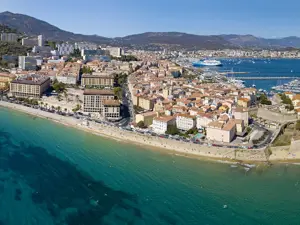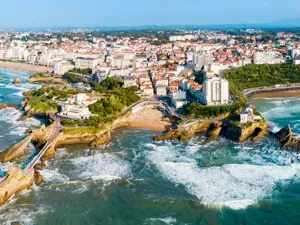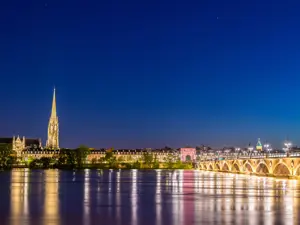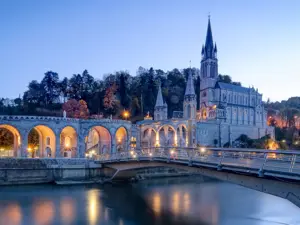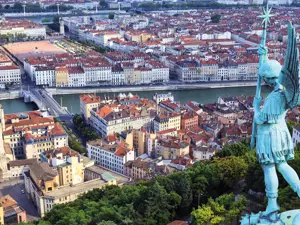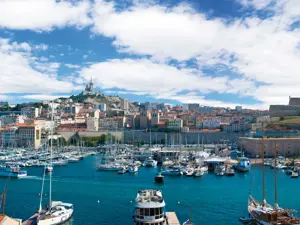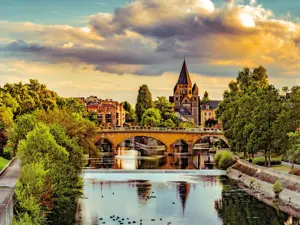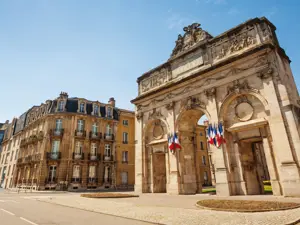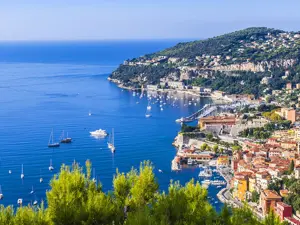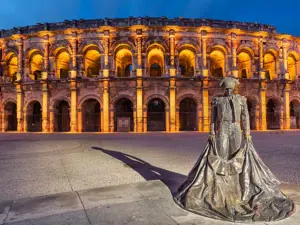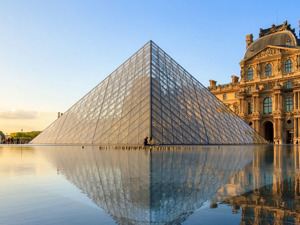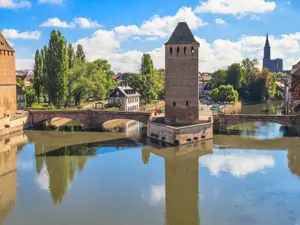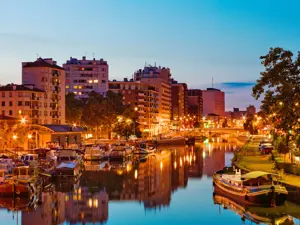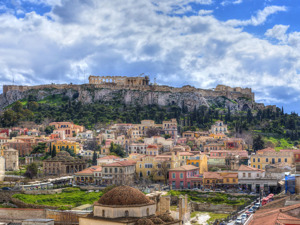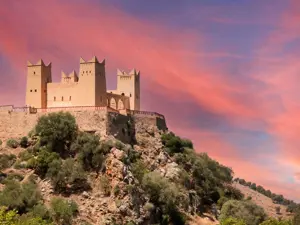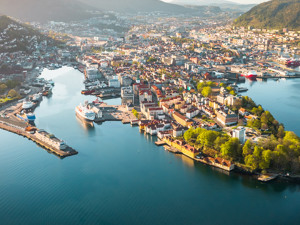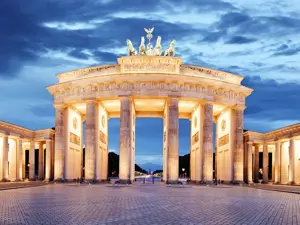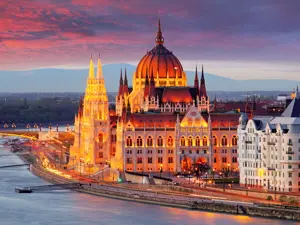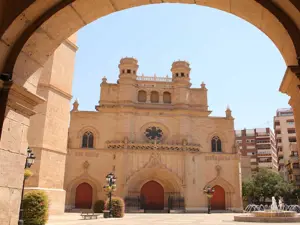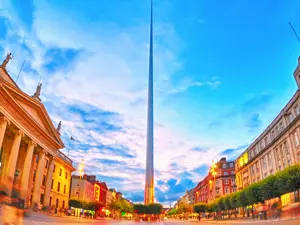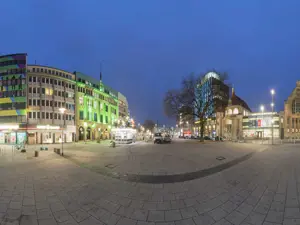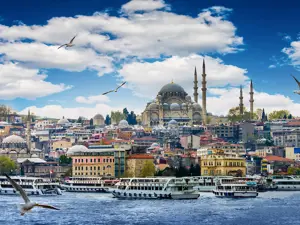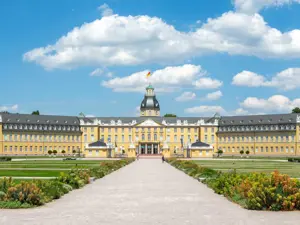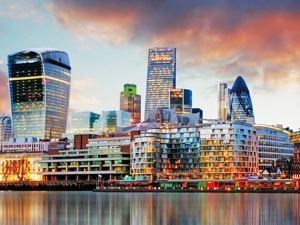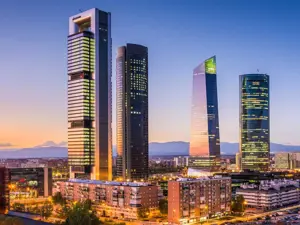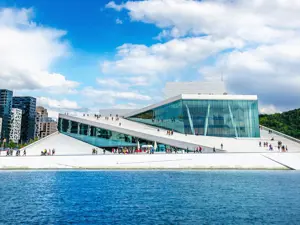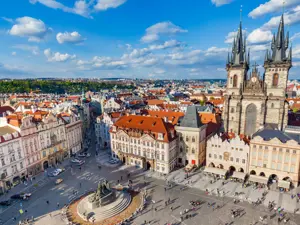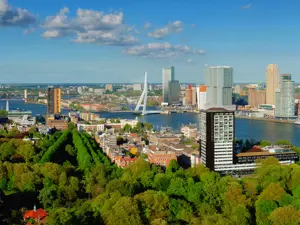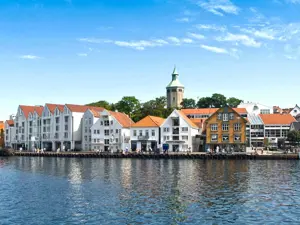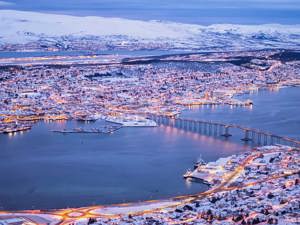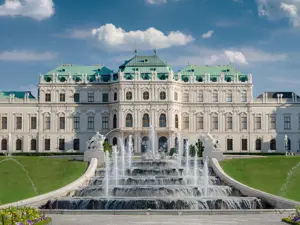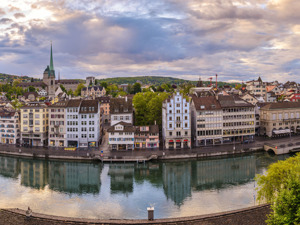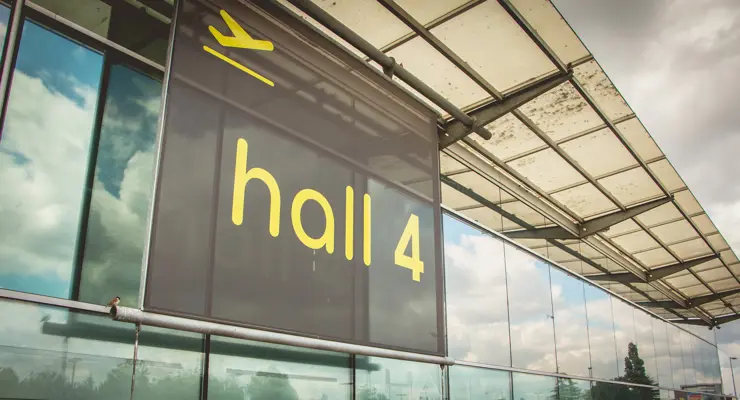Effervescent heart of Brittany surrounded by the Loire
The waters of the River Loire, the longest river in France and the ancient “royal highway”, surround Nantes before flowing into a vast delta in the Atlantic Ocean. Nowadays, Nantes is the ideal starting point for discovering the wonders of the castles of the Loire Valley. A welcoming, dynamic and creative city, the beating heart of Brittany and capital of the Department of the Loire-Atlantique, Nantes surprises visitors with its rich historic past, but also with its forward-thinking artistic effervescence, especially in the field of design.
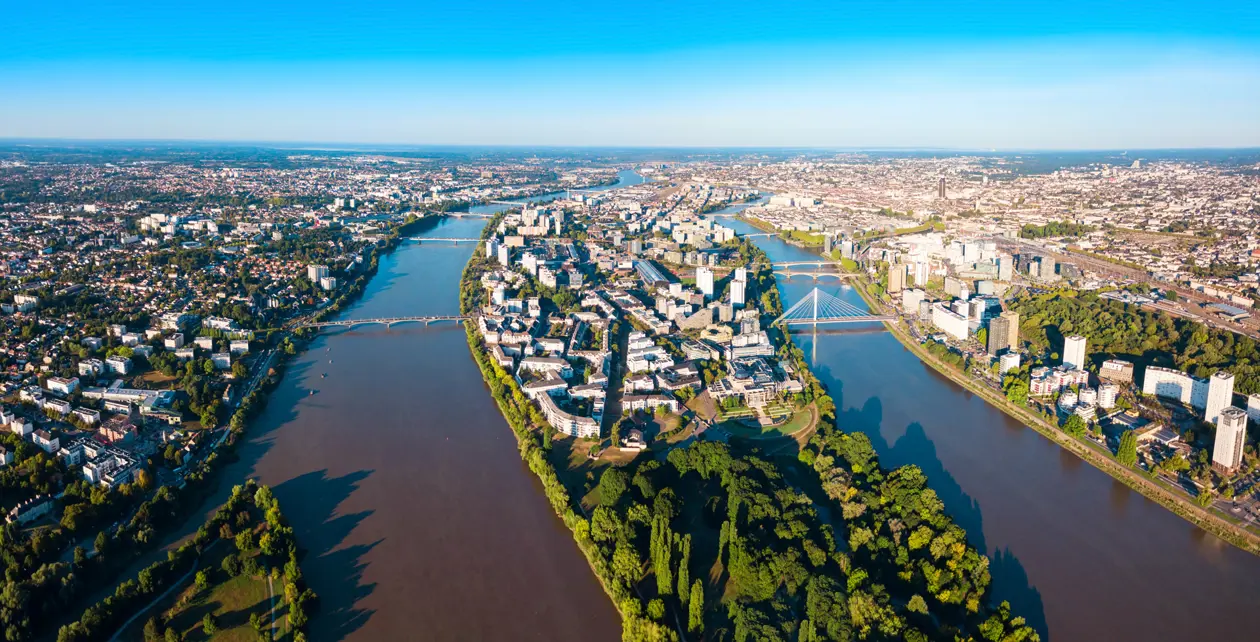
City landscape of Nantes. Photo: Sisterscom.com Shutterstock
From the ‘terrasse’ of the ultra-modern Tour de Bretagne - silhouetted against the sky to a height of 144 metres - a 360-degree vista of the city can be enjoyed while sipping an aperitif at ‘Le Nid’, sat on egg-shaped armchairs.
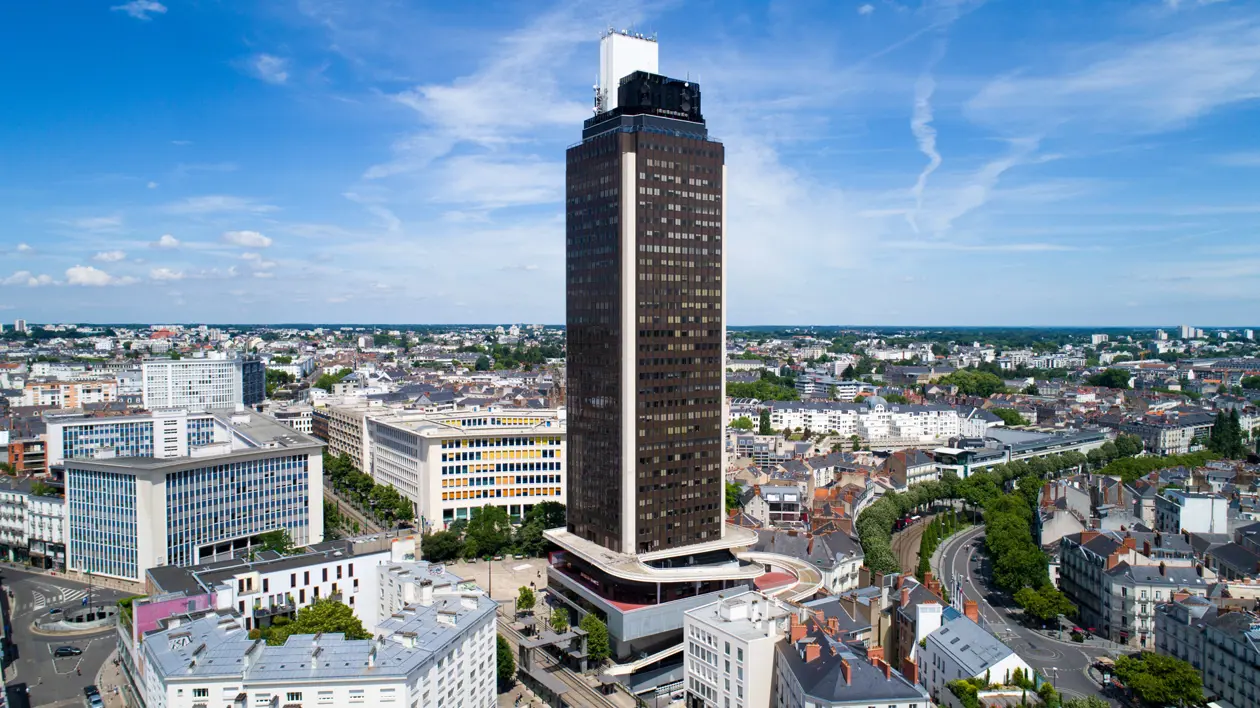
The Tour de Bretagne in Nantes. Photo: Sisterscom.com Shutterstock
And from there, scanning the rooftops, the city’s ducal power appears in all its glory in the Castle of the Dukes of Brittany, where Anne of Brittany was born, twice queen of France, wife of Charles VIII and then Louis XII. Perennially jealous of its political independence, Brittany was annexed to the Crown with the Duchess’s second marriage. The castle has a Renaissance style, inspired by the Italian constructions that Anne loved, and is the first of a series of royal residences along the Loire river.
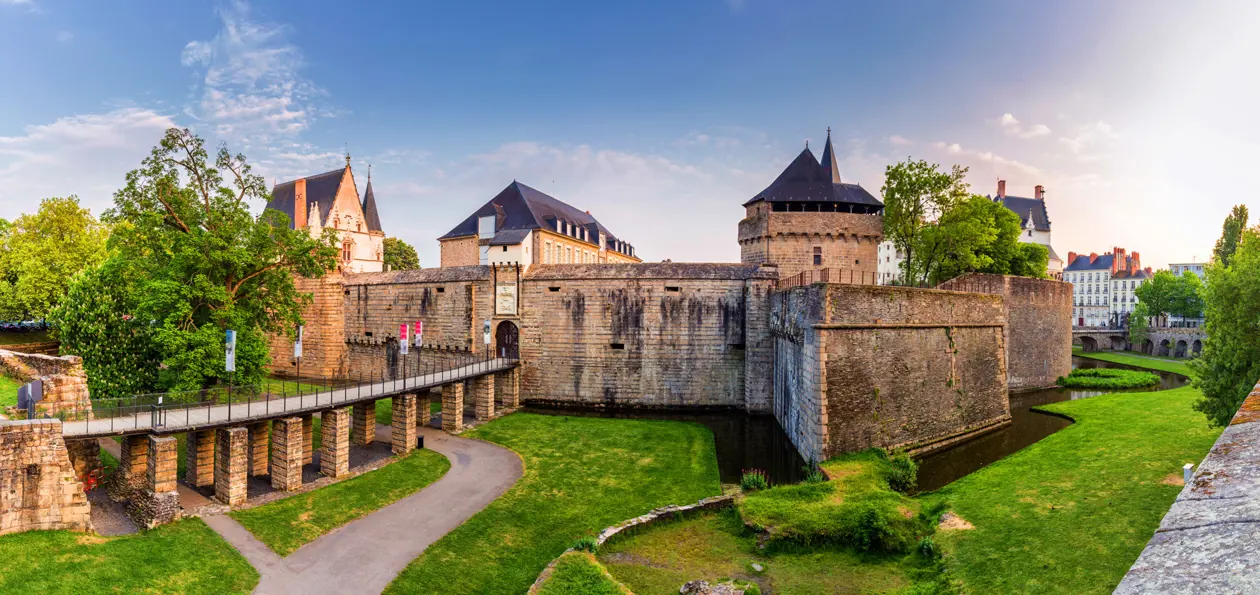
The Castle of the Dukes of Brittany in Nantes. Photo: Sisterscom.com Shutterstock
Today it houses the Nantes History Museum, which accurately tells the story of the economic and commercial development of the city (shipyards, the biscuit industry and sugar-processing). The sugar came from the Antilles, where slaves, taken from Africa by merchants from Nantes with their ships, were unloaded: a disturbing page of history that the city wished to exorcise by creating a memorial dedicated to the abolition of slavery. The Feydeau District, a former island on the Loire in heart of Nantes, with its elegant buildings in tuff and granite, all with functional warehouses on the ground floor, demonstrates the productiveness the ship-owners of Nantes during the period of trade with the American isles.
A rare opulence is manifested in the nineteenth-century Passage Pommeraye, which was named after its creator. This gallery in Neoclassical style is uniquely distributed over three floors and with its elegant boutiques was once an elegant meeting place of the Nantes bourgeoisie.
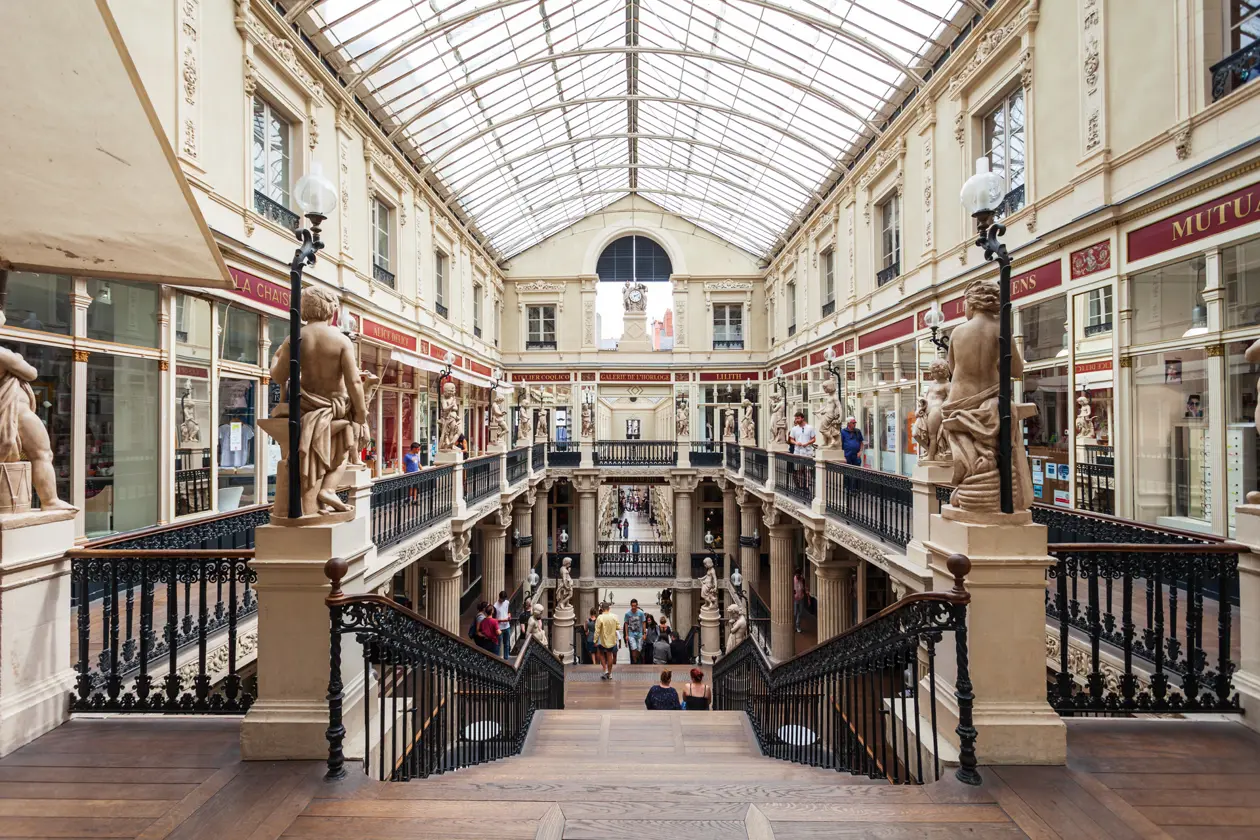
The Passage Pommeraye in Nantes. Photo: Sisterscom.com Shutterstock
Personalities such as Jules Verne were born in Nantes and enhance its fame. The city has paid homage to its illustrious citizen with the creation of machines conjured up by the imagination of the writer that children hold so dear: the Carrousel des Mondes Marines is a carousel made up of giant crabs, enormous pirate fish and submarines, an underwater world that brings to life the atmosphere of one of Verne’s most beloved novels.
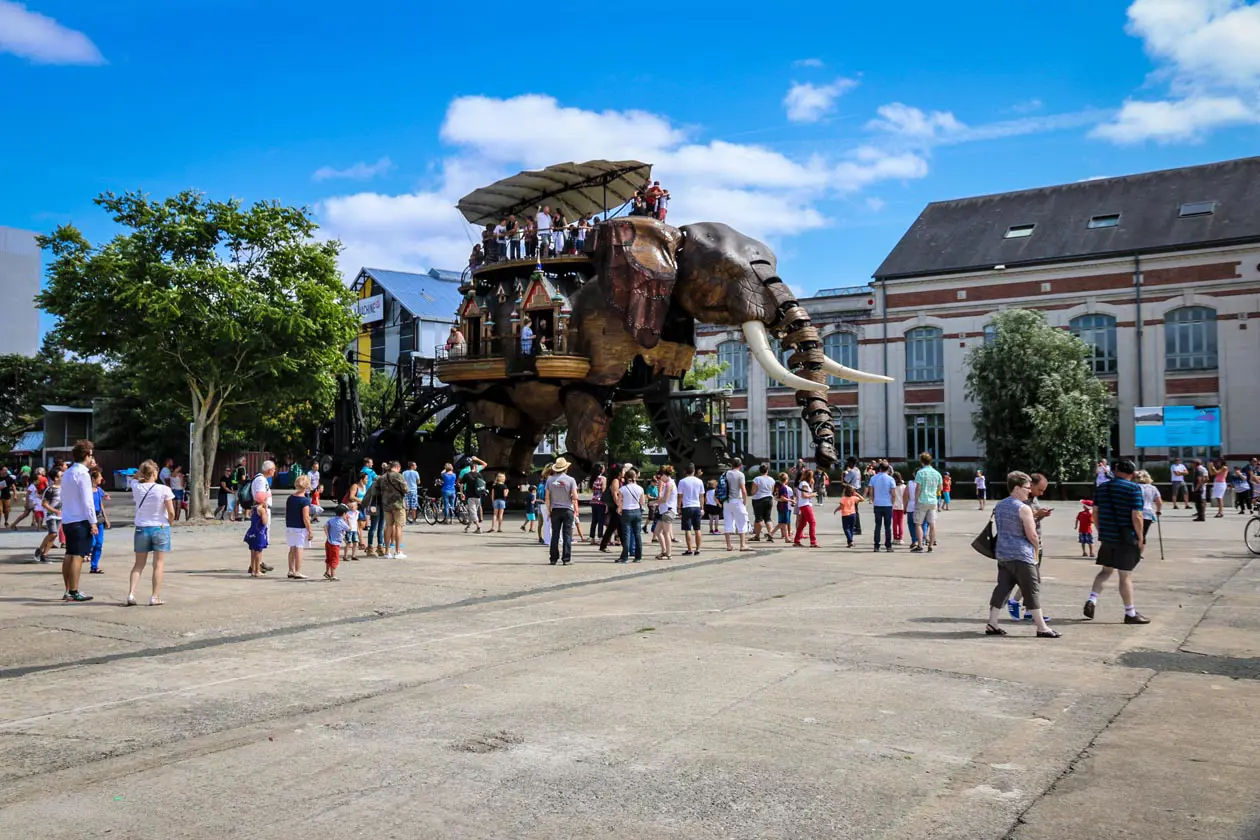
The Great Elephant in Nantes. Photo: Sisterscom.com Shutterstock
A 14-metre tall Great Elephant connects the Carousel to the area of Les Machines de l’Île, where self propelled machines that recreate Verne’s fantastic creatures are built - a joy for young and old alike. The beautiful scenery makes Nantes a romantic place, in part due to its large green spaces and more than 100 parks and gardens (declared the greenest city in France for 2013).
The nearby Atlantic Ocean brings in a salt wind which, together with the surrounding forests, makes the air among the cleanest and healthiest on the continent. The atmosphere of its cafes; the Belle Époque brassieres; the taste of its traditional biscuits; the bouquet of Muscadet, its most renowned wine; the cultural vivacity of the students that flock to its famous university; and the presence of international art works along the Estuary trail, which can also be covered “à velo”, make Nantes one of the European capitals of ‘good living’.
The cuisine of Nantes
A refined way of living is also found in the traditional recipes that foster conviviality. The cuisine of Nantes, to be savored in typical taverns or restaurants, offers quality dishes.

Absolutely worth tasting are the endless variations of crepes (sweet or savory, flavored with rum, vanilla, orange), the Beurre blanc sauce to pair with fish, and the soft Nantais cake, made with sugar, almonds, butter, and rum from the West Indies, with an exotic flavor.
Text by Anna Glik
Updated by Alisè Vitri
All rights reserved.
Tourism Board
www.nantes-tourisme.com
www.france.fr
Partnership with Booking.com
Where to sleep in Nantes
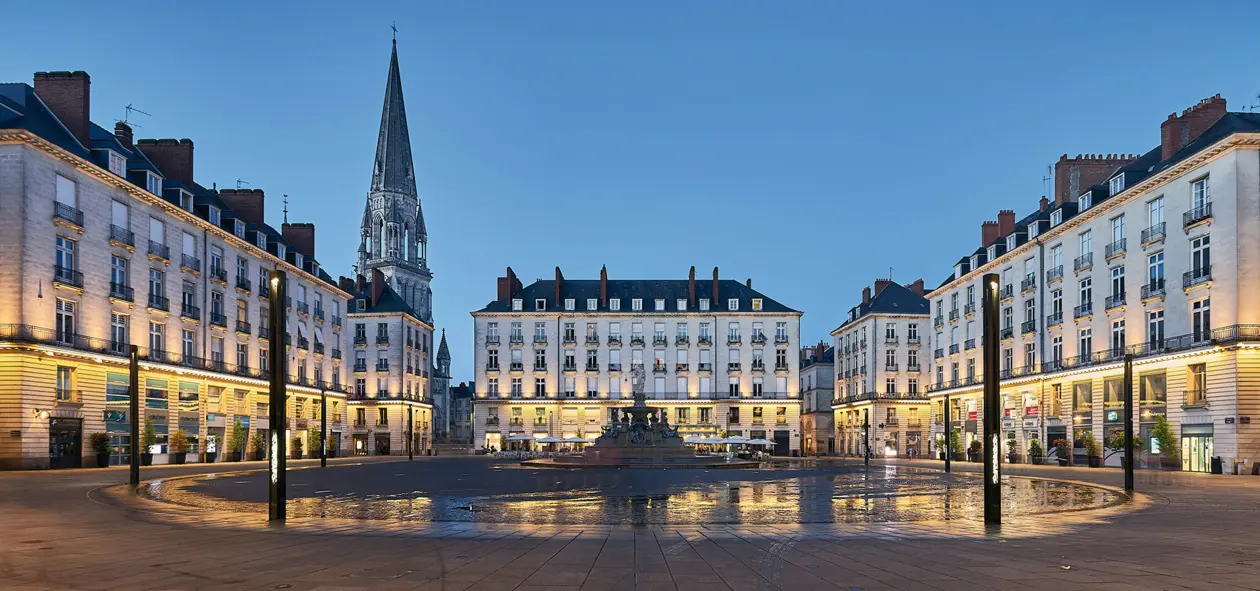
Nantes is a welcoming city and offers different possibilities for accommodation.
To find the ideal hotel and the best offers you can do a search for the stars but also for districts or landmarks.
STARS
Hotels for stars, differentiated by type of services:
DISTRICTS
Hotels in the districts
LANDMARKS
Hotels in tourist areas
LANDMARKS
Hotels in tourist areas
NEARLY
Hotel in the surroundings
AIRPORT
Hotels near the airport
where to go in nantes
Monuments in Nantes
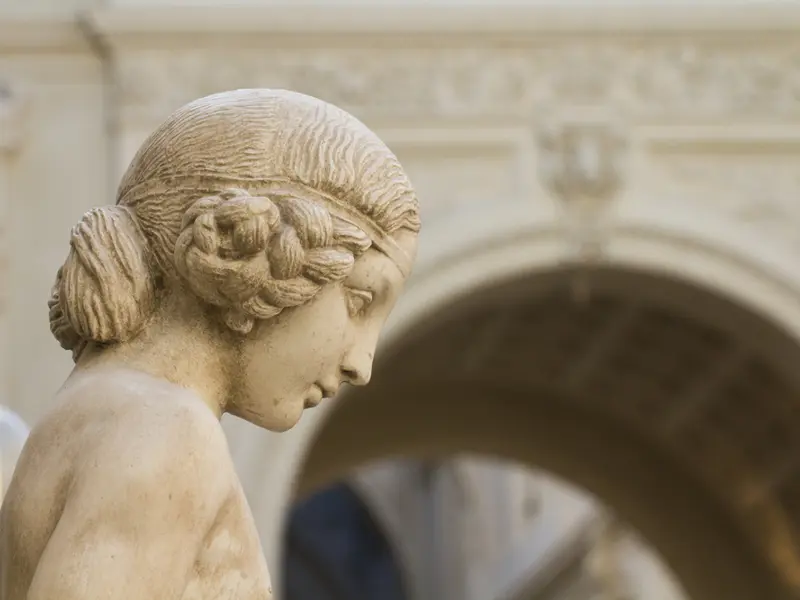
PASSAGE POMMERAYE
This is a covered walkway of great architectural value. Built in 1843, this spectacular gallery represents the Belle Époque style and has been the set for many well-known movies such as “Lola” and “Une Chambre En Ville”. Many shops and boutiques are located inside for an interesting shopping experience.
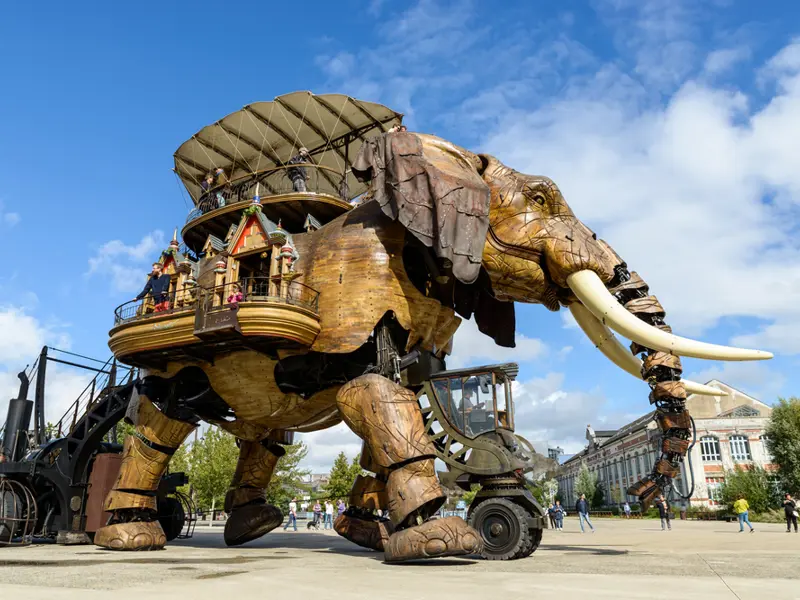
Photo: Sisterscom.com Shutterstock
GRAND ÉLÉPHANT AND GALERIE
OF THE MACHINES DE L’ILE
An interesting workshop of self-propelled machines and monumental mechanical structures. It is possible to climb aboard the most impressive one, the “great elephant”, in order to admire the surrounding city from a height of 14 metres. Located in the old harbour warehouse, it features restaurants, bars, nightclubs and a modern art gallery, the HAB Galerie.
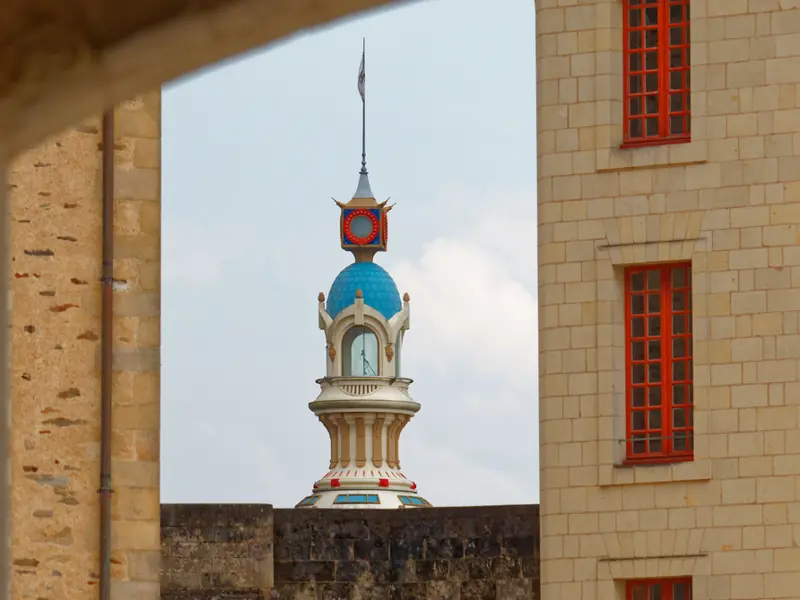
Photo: Sisterscom.com Shutterstock
LIEU UNIQUELU - THE LU TOWER
The restoration carried out in 1998 on the historic biscuit factory “Petits Beurres”, transformed it into the Lieu Unique (Unique Location), and came to an end with the public opening of the “Il Lieu Unique” tower. It is a venue with lounge areas, a restaurant, a bar and reading room. On the top floor a panoramic view of Nantes can be enjoyed from the Gyrorama, an original machine worthy of Jules Verne, which can be operated by visitors. The factory is the symbol of the city’s industrial history in the nineteenth and early twentieth-century.
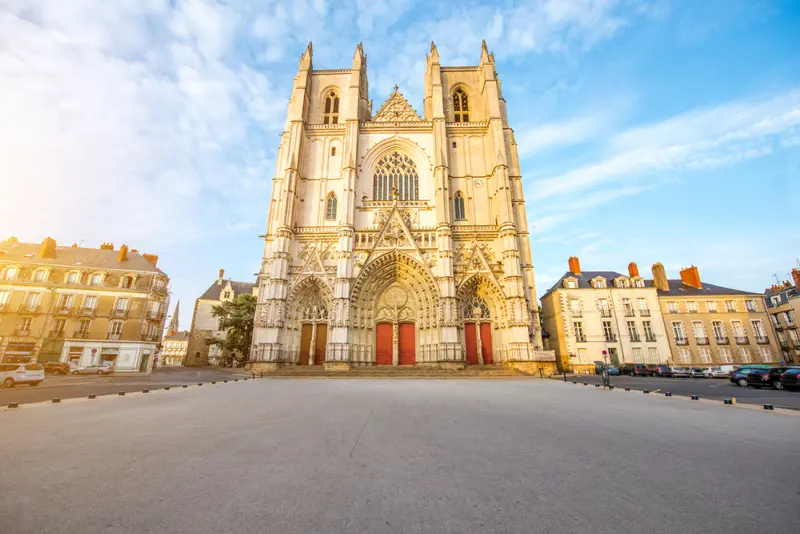
CATHÉDRALE SAINT - PIERRE ET SAINT-PAUL
In the heart of the medieval neighbourhood, Bouffay, not far from the castle, stands the Gothic church with vaulted ceilings that are higher than those of Notre Dame in Paris. The Carrara marble tomb of Francis II, the last Duke of Brittany, with his wife Margaret de Foix, is located inside. The sculptor Michel Comombe was commissioned to build the tomb in 1507 by their daughter Anna after the death of her father and in honour of her parents. On the north side of Cathedral, the St. Peter’s gate conjures up images of the old city, protected by its walls.
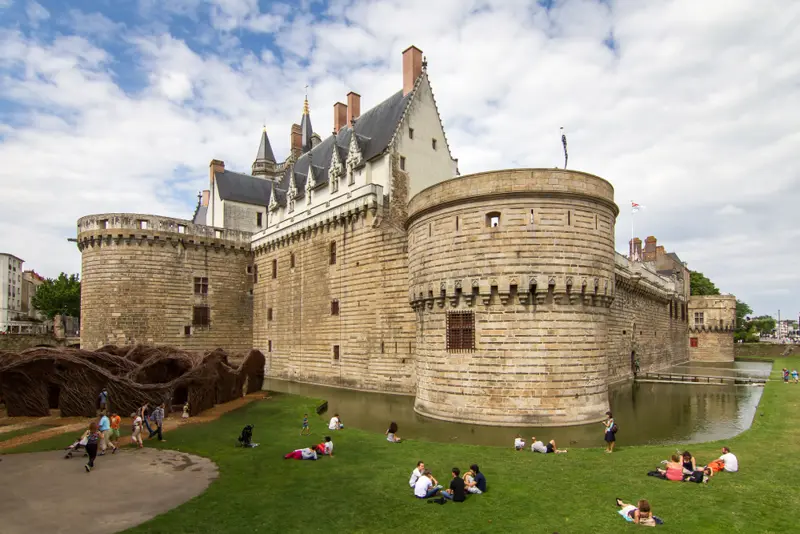
Photo: Sisterscom.com Shutterstock
CHÂTEAU DES DUCS DE BRETAGNE -
MUSÉE D’HISTOIRE DE NANTES
This museum offers testimonies of the past with multimedia aids that illustrate the city’s history. The promenade around the walls offers new views over the city, courtyard and moat garden. The fifteenth-century ducal residence houses Nantes’ new History Museum which offers temporary exhibitions and cultural events. A stop in the tower restaurant, known as “Vieux Donjon”, or shopping in the boutique library, is highly recommended.
Museums in Nantes
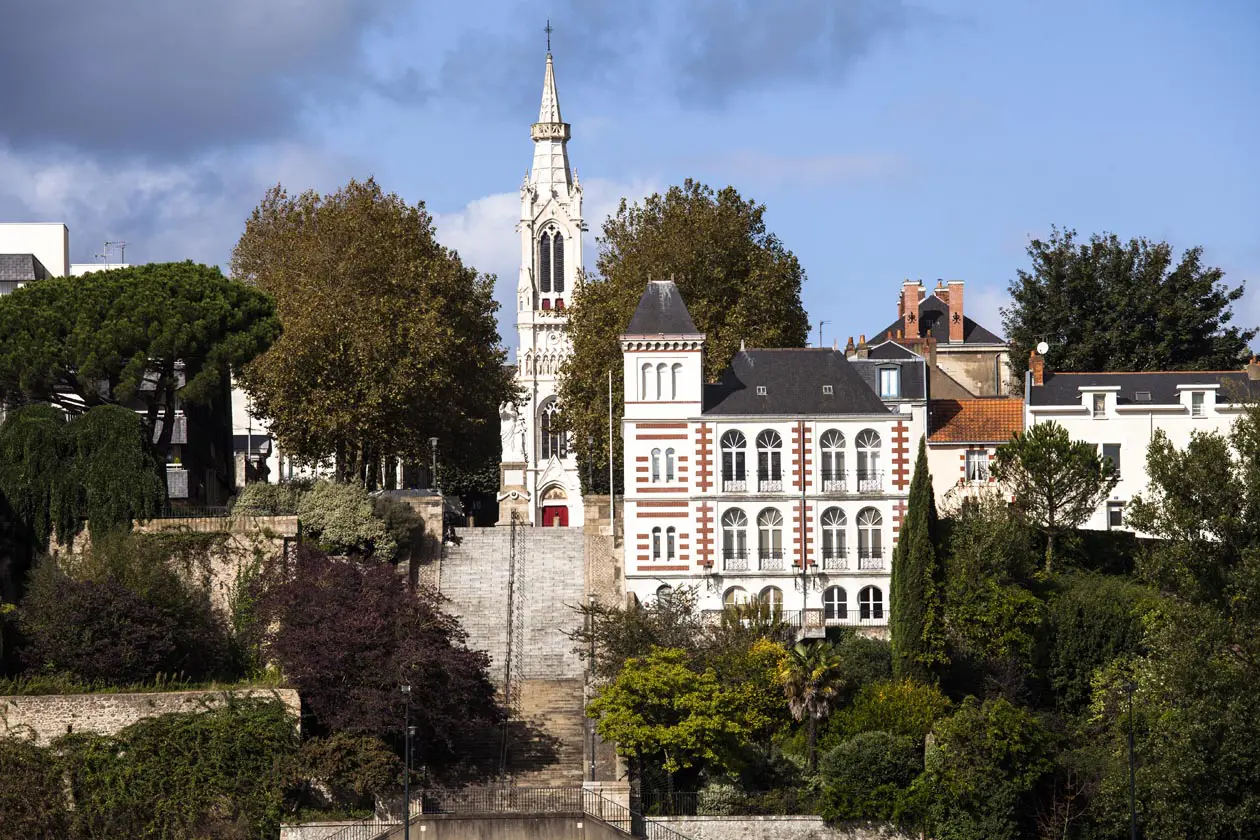
MUSÉE JULES VERNE
This is an impressive bourgeois residence from the nineteenth-century that houses the Jules Verne Museum. The writer was born in Nantes in 1828. This museum was dedicated to him in 1978 for the 150th anniversary of his birth and brings together manuscripts, models and personal items.
MUSEE DE BEAUS ARTS
The museum is arranged around a vast and bright central courtyard. The spacious layout of the building allows for the chronological presentation of a harmonious collection that follows the history of Western painting from the thirteenth to the nineteenth-century and artistic practices from the twentieth century up until today.
Excursions in Nantes
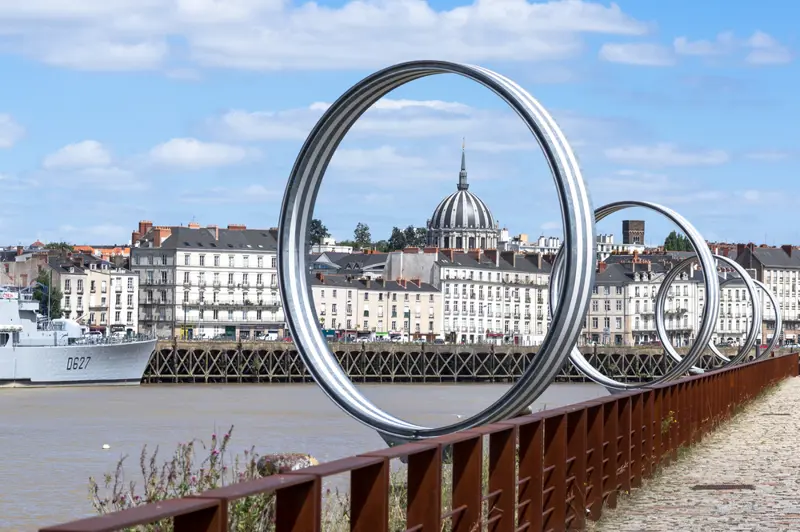
ESTUAIRE NANTES
A route along the estuary. Here you can admire the permanent works of internationally renowned artists, scattered throughout a park that extends for around 60 km. The works have a symbolic value: a house suspended 15 metres above the ground, a swinging pendulum on the side of an old cement factory, a star garden, a garden on the roof of an underwater base and the famous Buren “rings” in the port of Nantes. The route can be carried out by train, bus or bicycle.

CLISSON
The medieval town of Clisson is located in the heart of the famous Muscadet wine region in the Loire Valley. Departing from Nantes you can admire natural landscapes and stop for a walk along the vineyards or in a cellar to taste the wines. Once in Clisson you can visit the city, a small village with historic streets, architecture and a castle.
Partnership with GetYourGuide
Discover all tours
News & Useful info
Shopping
You might be interested in
Other destinations
Airports nearby Nantes







